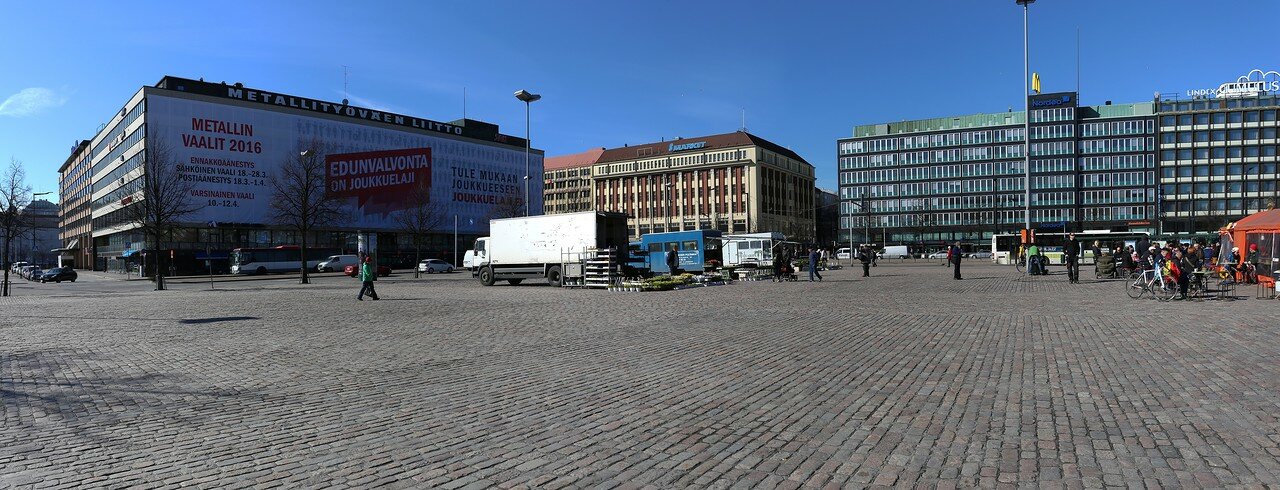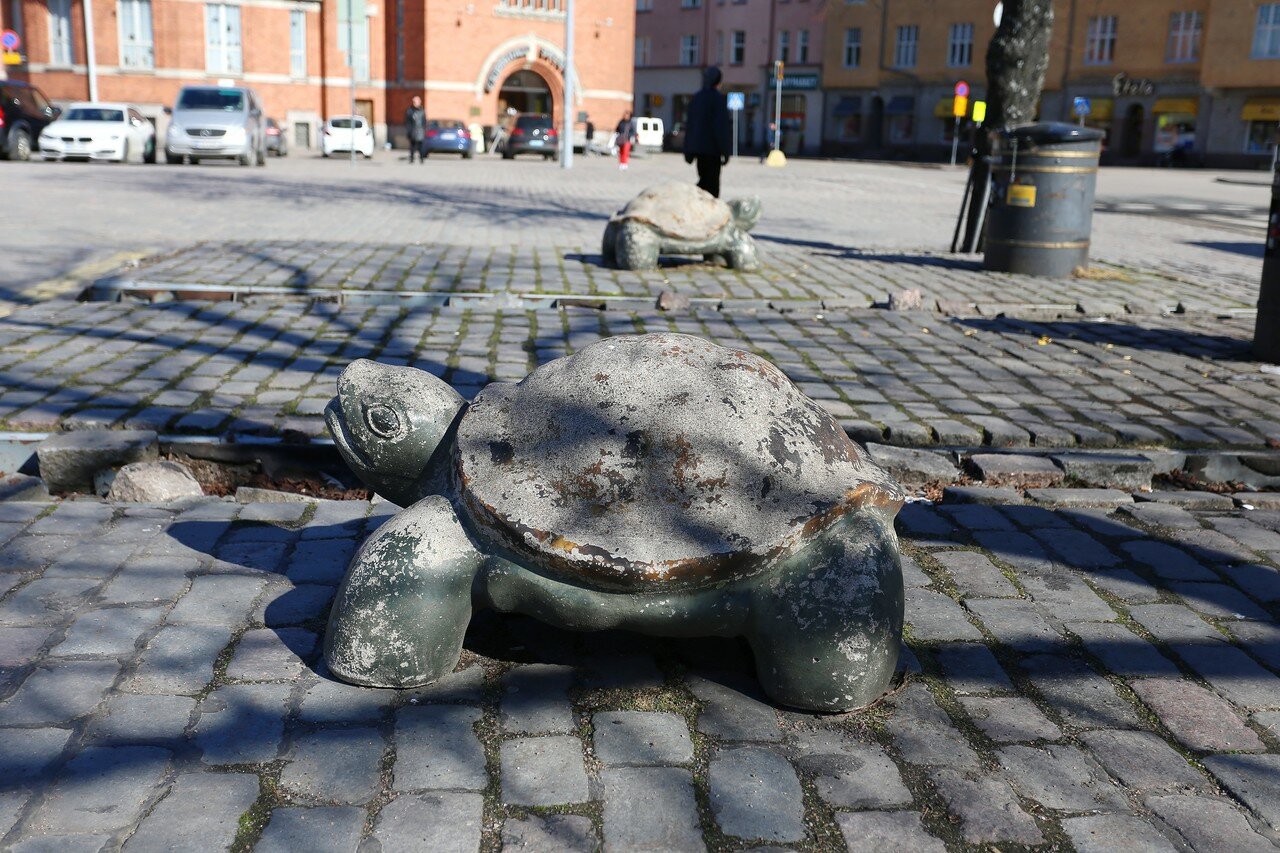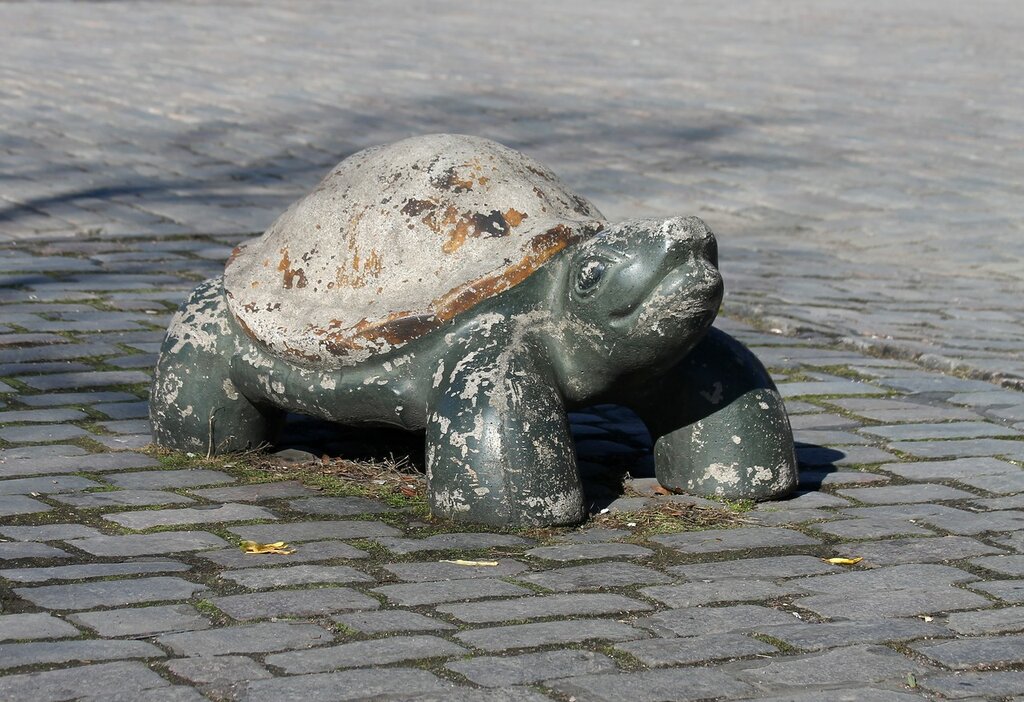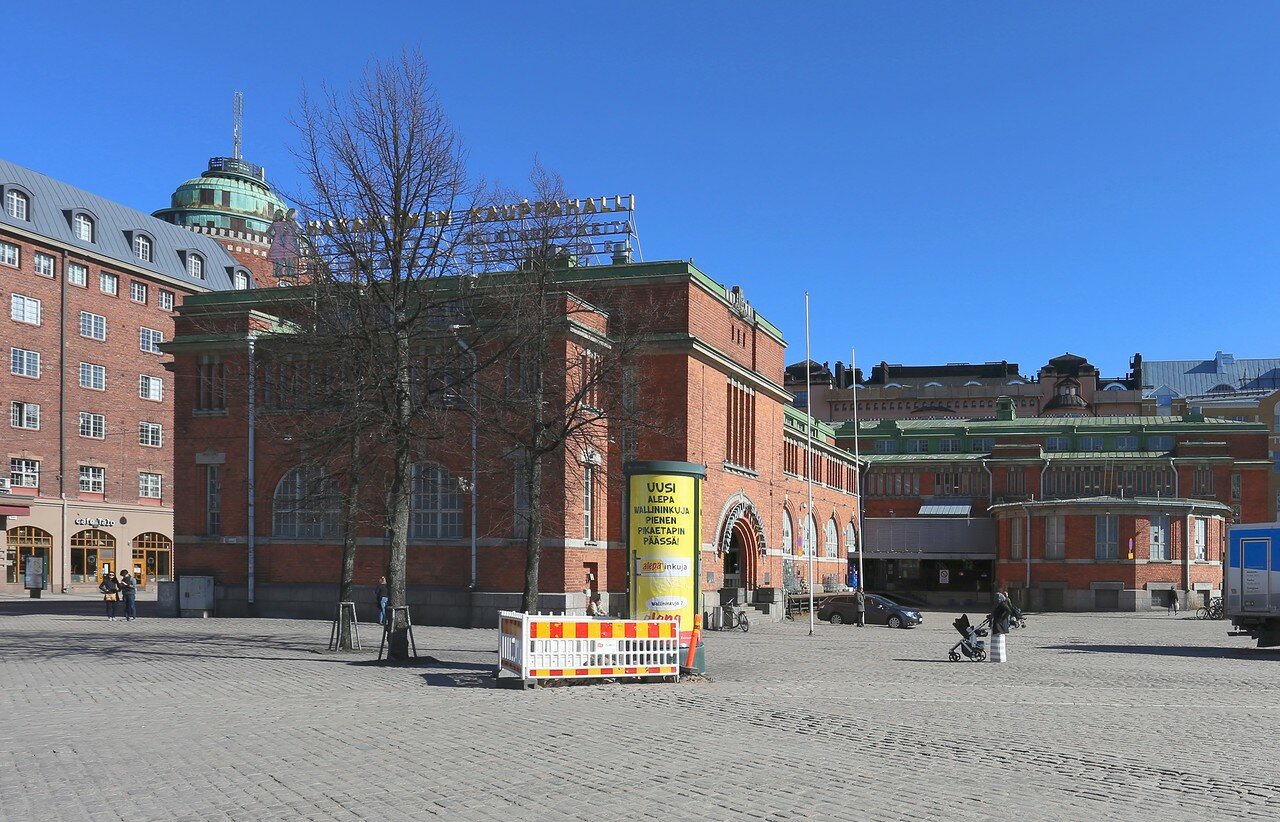Hakaniemi Square, Helsinki
After crossing the Long bridge, we will find ourselves in the square where the Kallio district begins, which was once a working-class suburb. This site was a swampy lowland, drained and built up in the late 19th century, during the rapid growth of Helsinki.

Novavya square was intended for market trade, having received the appropriate name. The first merchants of produce from the surrounding farms appeared here before Christmas 1897.

In a short time, a lot of shops and shops selling non-food products opened around the square. In particular, the Hakaniemi district became a center for trade in textiles and clothing, here was home to numerous sewing workshops.

In the second decade of the 20th century, the fish trade moved to the area from Kauppatori.

During the Second world war, most of the wooden structures in and around the square were used for firewood. In the 50s, modern buildings replaced them.

Proximity to working-class neighborhoods, as well as those located nearby headquarters of trade Union organizations, left-wing parties and the labor movement, we have made the square a traditional venue for may day celebrations demonstrations.

In 1979, the square was completely renovated, completely replacing the paving stones and decorating it with small sculptural forms - cute ones the turtles.

The square is open for trade from 7 to 14 hours from Monday to Saturday, and also on the first Sunday of the month. Today is Monday and Friday there is no excitement.

The monument "Druzhba" in the South-Eastern part of the square, opened in 1990, is of Russian origin.
 .
.
The monument was presented to Helsinki by the twin city of Moscow. The author of the sculpture is O. S. Kiryukhin.

In the Northern part of the square is the hakoniemen Kauppahalli trading hall. The decision to build the building was made by the City Council on October 20, 1908, but the final project presented by the architect Einar Flinkenberg was approved only in June 1912. In the same year, the pile Foundation is ready, the next year the building was almost completed, but finishing work was suspended for a long time due to a strike. The opening ceremony was held on June 1, 1914. The first floor was occupied by food aisles, and the second floor was occupied by the sale of all sorts of small items, including traditional Handicrafts.

Interestingly, for the 1952 Olympic games, it was decided to build a large and modern public toilet in the building. The project provided for 8 retail sections to be occupied by the establishment, which caused strong opposition from the market administration, which was losing income from rent.

Reconstruction of shopping malls was carried out in 1957 and 1971, with escalators installed at the latter. Now the hall is again under repair, as they say until the beginning of 2017.
<